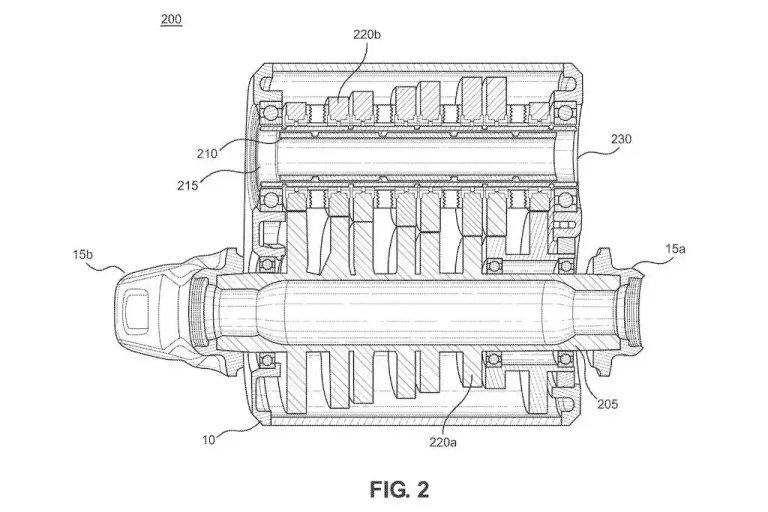The Future of Mountain Bike Gearboxes: Is Fox About to Change the Game?
It was just a matter of time before the big players in the mountain bike industry had to face what seems to be the inevitable future of MTB technology—the widespread adoption of gearboxes. For years, the industry has relied heavily on traditional derailleur drivetrains, but as technology evolves and rider demands shift toward durability, low maintenance, and better performance, gearboxes are becoming harder to ignore.
However, there’s more at play here than just innovation. Market dominance and brand rivalry heavily influence how quickly this transition happens. When it comes to drivetrains, let’s be realistic—there are only two real options: SRAM and Shimano. These two giants have held a virtual monopoly for decades, and neither is keen to let new players disrupt the status quo.

Let’s take Shimano, for instance. We’re talking about a company that’s only now preparing to release a new wireless drivetrain system , a whole six years after SRAM’s AXS series hit the market. Given this delay in catching up with existing technology, it’s hard to imagine Shimano diving headfirst into the gearbox game anytime soon. Their conservative approach to innovation means that they’ll likely wait until there’s undeniable market demand before making any drastic moves.
On the other hand, SRAM has shown a more progressive approach, especially with their Eagle Transmission line, which pushes the limits of what traditional derailleur systems can do. But even for SRAM, embracing gearboxes would require a massive shift—not just in product development but also in convincing manufacturers and consumers to adopt a completely different drivetrain architecture.
And that brings us to one of the biggest issues: frame compatibility. Most mountain bikes on the market today are designed around derailleur systems. Introducing gearboxes at a large scale would mean frame redesigns, additional manufacturing costs, and possibly a new set of standards for integration. This is a major reason why even if the intentions are there, the shift is slow.
But make no mistake—the industry is watching. Smaller brands and niche manufacturers are already experimenting with gearbox technology, showing what’s possible when performance and innovation take priority over tradition. The moment these systems prove themselves on a larger stage—think World Cup podiums or enduro championships—the big brands won’t have a choice. They’ll either adapt or risk losing market share to newcomers willing to break the mold.
Ultimately, the question isn’t if gearboxes will become mainstream in mountain biking; it’s when. And when that time comes, the battle between SRAM and Shimano will take on a whole new dimension. Will SRAM continue to lead the charge, or will Shimano finally surprise us all with a game-changing entry? Only time—and maybe a few more patents—will tell.
So, what´s this Fox Patent all about?
Some of us believe it’s the natural next step in downhill bike evolution. Others, however, think the hype might be overblown. Regardless of where you stand, it’s hard to deny the potential advantages gearboxes have over traditional derailleur drivetrains—namely, greater reliability, enhanced durability, and superior "chain" retention.
But that’s not all. When designed for the right application, gearboxes can also improve suspension performance. By shifting the weight of the derailleur and cassette from the rear wheel to the front triangle, you get a better sprung-to-unsprung mass ratio. This adjustment can lead to smoother suspension behavior, though the exact performance gains remain a topic of ongoing debate.

While we’ve seen a growing presence of gearbox-equipped downhill bikes at World Cup events, they’re still far from mainstream.
On January 29th, Fox was granted a patent for a mid-sprocket assembly—in simpler terms, a gearbox. Although the patent doesn’t specify the number of gears, it reveals crucial insights into the system’s design.
One key focus? Shifting under load—a known weak spot for existing gearboxes. Current models, like the Pinion Smart Shift, often struggle here. For example, while Pinion’s system can typically shift under load, it will cancel the shift if it detects excessive pressure to avoid damaging the internal components. This happens because the radial pawls in the drive mechanism can get damaged if a shift occurs while they’re engaged.

Fox’s patent suggests it might have found a way around this limitation. If Fox’s new design can deliver smooth, load-resistant shifting, we could see a major shift (pun intended) in downhill bike technology. Will gearboxes finally claim a larger share of the World Cup scene? Time will tell.